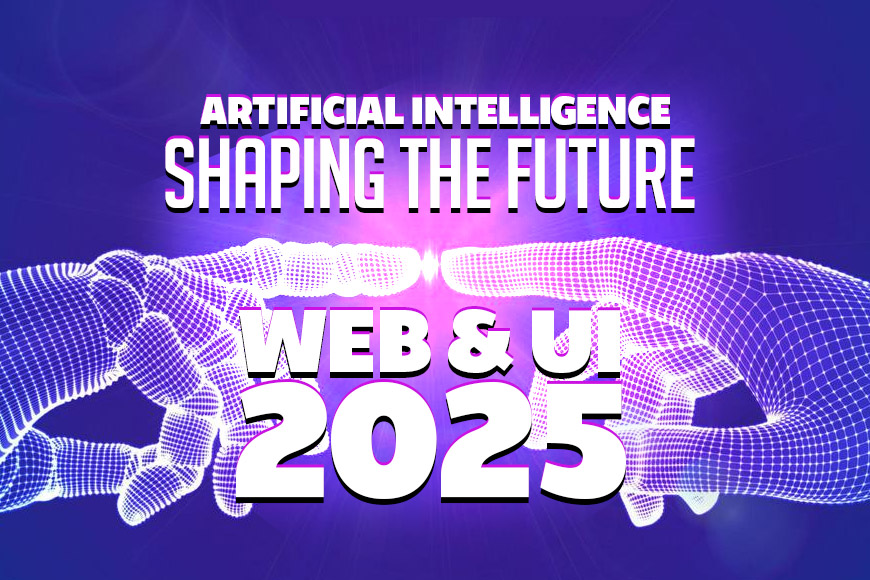Artificial Intelligence (AI) is reshaping web development, making it faster, more efficient, and highly personalized. In 2025, AI-driven tools are not just assisting developers—they’re transforming how websites are designed, built, and optimized. From generating code to enhancing user experiences, AI is a game-changer for businesses aiming to thrive in the digital age. This blog explores how AI is revolutionizing web development, key tools to watch, and practical ways to leverage it.
The AI Revolution in Web Development
AI’s impact on web development is profound. According to recent industry reports, 65% of developers now use AI tools to streamline workflows, saving up to 40% of development time. AI automates repetitive tasks like coding, testing, and debugging, allowing developers to focus on creativity and strategy. Moreover, AI-driven personalization—such as dynamic content tailored to user behavior—has boosted conversion rates by 30% for e-commerce sites.
AI also enhances accessibility. Tools like AccessiBe use machine learning to ensure websites comply with WCAG 2.1 standards, making digital spaces inclusive for users with disabilities. As businesses compete for online visibility, AI’s ability to optimize performance and user engagement is unmatched.
Key AI Tools for Web Development
Several AI tools are leading the charge in 2025:
- MidJourney: Generates high-quality visuals for unique website aesthetics, reducing reliance on stock images.
- Figma AI Plugins: Automate layout adjustments and design iterations, cutting design time by 50%.
- GitHub Copilot: Suggests code snippets in real-time, supporting languages like JavaScript, Python, and HTML.
- Wix ADI: Builds fully functional websites from user prompts in minutes, ideal for small businesses.
- ChatGPT for Code: Writes clean, error-free code for front-end and back-end development.
These tools empower developers to create scalable, visually stunning websites with minimal manual effort.
Practical Applications of AI in Web Development
- Rapid Prototyping
AI enables developers to create and test multiple website prototypes in hours. Tools like Framer AI generate responsive designs based on simple text inputs, allowing businesses to experiment with layouts before committing to a final version. This reduces project timelines from weeks to days.
- Personalized User Experiences
AI analyzes user data—such as browsing history and demographics—to deliver tailored content. For example, Netflix’s recommendation engine inspires similar AI-driven features on e-commerce sites, where product suggestions adapt in real-time, increasing sales by 20-30%.
- SEO Optimization
AI tools like SurferSEO analyze competitor content and suggest keyword strategies, ensuring websites rank higher on Google. They also optimize meta tags, headers, and image alt texts automatically, saving hours of manual work.
- Automated Testing and Debugging
AI-powered testing tools like Testim use machine learning to identify bugs and performance issues across devices and browsers. This ensures websites are flawless before launch, reducing post-launch maintenance costs.
Challenges and Considerations
While AI is powerful, it’s not without challenges. Over-reliance on AI tools can lead to generic designs, as many platforms use similar algorithms. Developers must balance automation with creativity to maintain brand uniqueness. Additionally, AI-generated code may require human oversight to ensure security and compliance with standards like GDPR.
Ethical considerations also arise. AI tools trained on biased datasets can inadvertently exclude certain user groups, so developers must prioritize inclusivity. Regular audits and diverse testing pools are essential to mitigate these risks.
Visual Element (Infographic)
To enhance this blog, include an infographic titled “AI in Web Development: Key Stats and Tools.” The visual should feature:
- A timeline showing AI adoption in web development (2015-2025).
- Pie chart: 65% of developers using AI tools, 35% traditional methods.
- Icons representing tools (MidJourney, Figma, Copilot) with brief descriptions.
- Bar graph: 40% time savings, 30% conversion rate increase.
- Color scheme: Blue and white for a tech-modern feel.
Note: If you’d like me to generate this infographic, please confirm, and I can provide a detailed description or code for visualization.
How to Get Started
- Choose the Right Tools: Start with user-friendly platforms like Wix ADI for quick wins or GitHub Copilot for advanced coding.
- Train Your Team: Invest in AI literacy to maximize tool efficiency.
- Monitor Performance: Use AI analytics to track user engagement and refine designs.
- Partner with Experts: Collaborate with agencies like Zironyx to integrate AI seamlessly into your web strategy.
The Future of AI in Web Development
By 2026, experts predict 80% of websites will incorporate AI-driven features, from chatbots to predictive analytics. As AI evolves, we’ll see more immersive experiences, like websites adapting in real-time to user emotions via facial recognition. Staying ahead means embracing AI now.
AI isn’t replacing developers—it’s empowering them to create smarter, faster, and more impactful websites. Whether you’re a small business or a global brand, AI-driven web development is your ticket to digital success in 2025.

